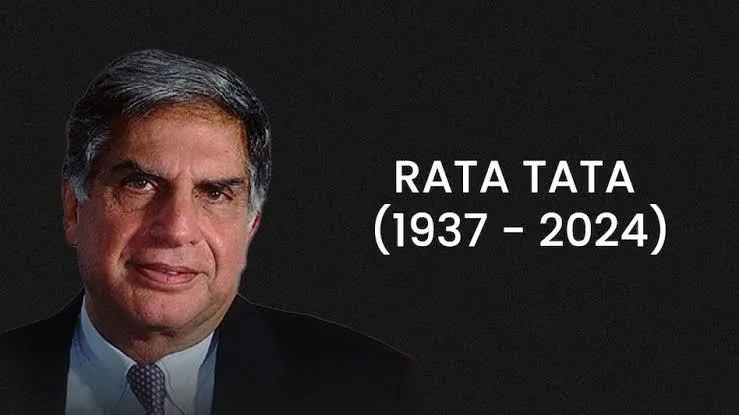The evening of October 9, 2024, is terrible news for us. The great leader, Mr. Ratan TATA, is no more. He took his last breath in Mumbai at the age of 86. Ratan Tata’s life and career are an inspiration to many. His journey from a young apprentice at Tata Steel to the head of one of the world’s most respected business conglomerates is a story of determination, vision, and an unwavering commitment to ethical leadership. As a businessman, innovator, and philanthropist, Ratan Tata has left an indelible mark on India and the world. His legacy serves as a guiding light for future generations, proving that businesses can succeed by creating wealth and uplifting society as a whole.
Ratan Tata: Introduction
Ratan Tata, synonymous with leadership, vision, and philanthropy, has shaped modern India’s industrial landscape. As the former chairman of Tata Group, India’s largest conglomerate, Tata has been instrumental in transforming the company into a global powerhouse. Beyond his business acumen, Ratan Tata is revered for his commitment to ethical leadership and social responsibility, consistently putting the greater good above short-term profits. His journey is a testament to how vision, integrity, and compassion can go hand in hand to create lasting impact.
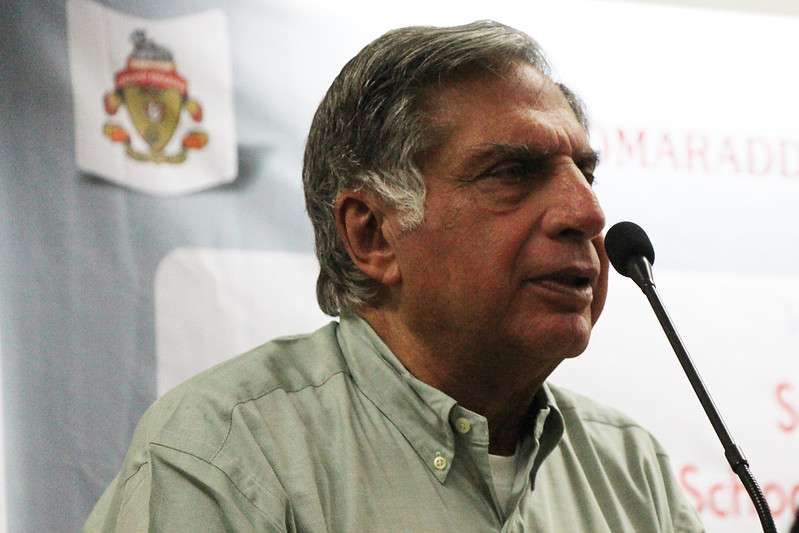
4 Most Successful Academics in the World – LetsGyan
Ratan Tata: Early Life and Education
Ratan Tata was born on December 28, 1937, into one of India’s most prestigious families. The Tata family was already a renowned name in the Indian business world, with a legacy dating back to the mid-19th century when Jamsetji Tata founded the Tata Group. Ratan Tata was raised in a family that valued business success, social welfare, and nation-building. Despite his privileged background, Tata’s upbringing was grounded in values of humility and simplicity, shaped significantly by his grandmother, Lady Navajbai Tata, who raised him after his parents separated.
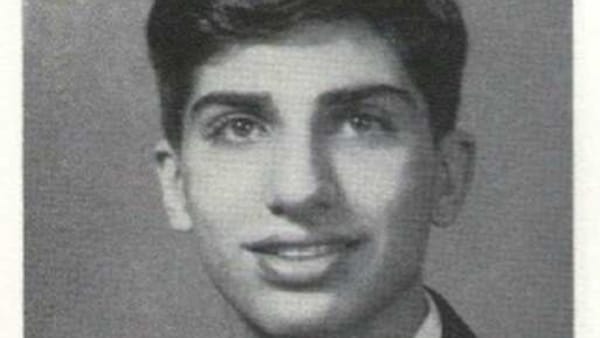
Tata attended the prestigious Cathedral and John Connon School in Mumbai before moving to the United States for higher education. He earned a degree in architecture from Cornell University in 1962 and later completed the Advanced Management Program at Harvard Business School in 1975. His background in architecture gave him a unique perspective, which was later reflected in his business strategies, where design, innovation, and functionality were at the forefront of Tata Group’s diverse ventures.
Ratan Tata: Entry into Tata Group
Ratan Tata’s journey in the Tata Group began in 1962 when he joined Tata Steel as an apprentice in Jamshedpur. Unlike many heirs to business empires, Tata did not start in a plush office but worked alongside blue-collar workers, getting his hands dirty on the shop floor. This experience was crucial in shaping his understanding of the grassroots operations of the company and helped him develop an empathetic leadership style.
Over the years, he held various positions within the Tata Group, working in different companies under the Tata umbrella. However, it wasn’t until 1991, when J.R.D. Tata, his uncle and the then-chairman of Tata Sons stepped down, and Ratan Tata was chosen to succeed him. His appointment was initially met with skepticism. Many senior executives within the group questioned his leadership capabilities, mainly because he was replacing a towering figure like J.R.D. Tata. However, Ratan Tata’s leadership style soon silenced critics and laid the foundation for a new era of growth.
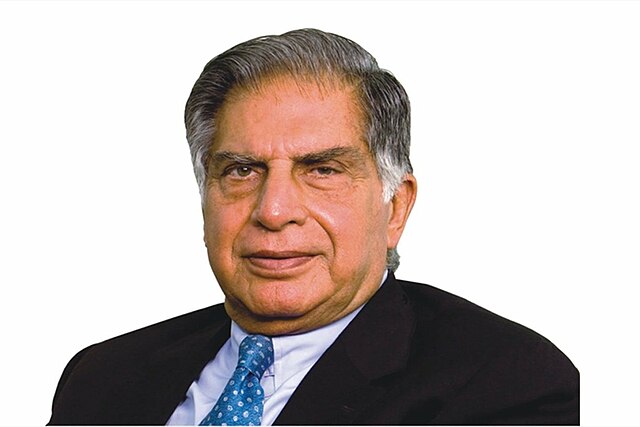
Ratan Tata: Transforming Tata Group
When Ratan Tata took over as chairman, the Tata Group was a sprawling conglomerate, but many of its businesses were run as independent domains with little synergy. Tata realized that for the company to compete globally, it needed a more unified vision. One of his first moves was to consolidate the many group companies under the Tata Sons holding company, which streamlined operations and improved efficiency. Several company heads resisted this decision, but Ratan Tata’s persistence and clarity of purpose won out.
Tata’s leadership was marked by bold decisions, including divesting non-core businesses and focusing on sectors where Tata Group could achieve global leadership. Under his stewardship, the company ventured into industries such as technology, automobiles, and telecommunications, which were seen as the future of India’s industrial growth.
Among his most significant achievements was the transformation of Tata Motors, which launched the Tata Indica, India’s first indigenously developed car, in 1998. While the Indica faced a rocky start, Ratan Tata’s unwavering belief in the product eventually paid off, and the car became a success story.
The boldest move came in 2008 when Tata Motors acquired Jaguar Land Rover (J.L.R.) from Ford Motor Company for $2.3 billion. At the time, many doubted the wisdom of this acquisition, particularly given the global financial crisis. However, under Tata’s leadership, J.L.R. was revived and became one of the most profitable divisions of Tata Motors. This move underscored Ratan Tata’s ability to think long-term and take calculated risks that would pay off.
Another notable acquisition was Tata Tea’s purchase of Tetley in 2000, making Tata Group a global beverage industry player. It was followed by the acquisition of Corus, a European steel giant, by Tata Steel in 2007. These acquisitions signaled the company’s emergence as a global entity and showcased Tata’s vision of turning the group into a world-class conglomerate.
The Tata Nano and Ratan Tata’s Vision for India
One of Ratan Tata’s most ambitious projects was the Tata Nano, a car aimed at providing affordable transportation for millions of Indian families. Tata’s inspiration for the Nano came from witnessing entire families traveling precariously on motorcycles. He envisioned creating a “people’s car” that would be safe, affordable, and within the reach of the commoner. Launched in 2009, the Tata Nano was priced at just ₹1 lakh (approximately $2,000), making it the world’s cheapest car.
While the Nano project faced many hurdles, including production delays and marketing missteps, the car symbolized Tata’s deep empathy for the needs of ordinary Indians. Although it did not achieve the commercial success anticipated, it remains a landmark in automotive innovation and a reflection of Tata’s desire to make a difference in the lives of the masses.
Ratan Tata: Philanthropy and Social Impact
Ratan Tata’s legacy is defined by his business achievements and deep commitment to philanthropy and social causes. True to the Tata family tradition, he ensured that a significant portion of the group’s profits was channeled into charitable activities. Much of this was done through Tata Trusts, which own around 66% of Tata Sons, making the group one of the largest philanthropic organizations in India.
Under Tata’s leadership, the group’s philanthropic initiatives focused on education, healthcare, rural development, and poverty alleviation. He was key in setting up institutions like the Tata Institute of Social Sciences and the Tata Medical Center. In addition, he supported causes such as water conservation, child malnutrition, and cancer research, among many others.
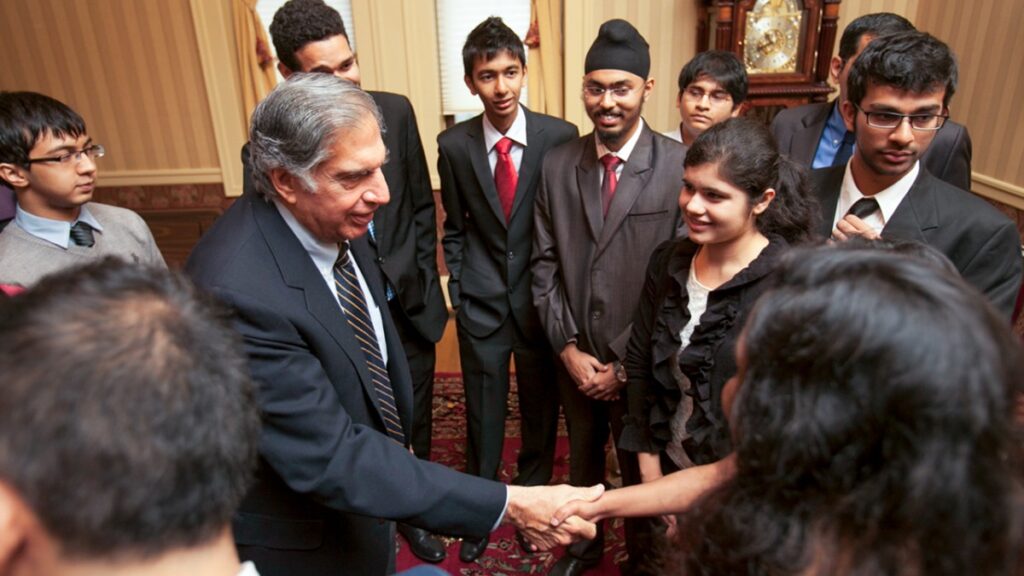
Tata’s philanthropy extended beyond India as well. He donated generously to global causes, including $50 million to establish an executive education center at Harvard Business School.
Ratan Tata’s Leadership Style and Legacy
Ratan Tata was known for his leadership style, which blends humility, integrity, and a people-first approach. His calm demeanor and ability to make tough decisions earned him immense respect both within and outside the Tata Group. He always maintained that a company’s success should not be measured solely by its profits but by its ability to contribute to the well-being of society.
Even after stepping down as chairman of Tata Sons in 2012, Ratan Tata continued to be an active voice in the business and philanthropic world. He remained a mentor and advisor to many entrepreneurs and continues to invest in startups through R.N.T. Associates.
Also Read – Top Five Famous National Parks in India – LetsGyan
Courtesy – ChatGPT

